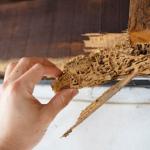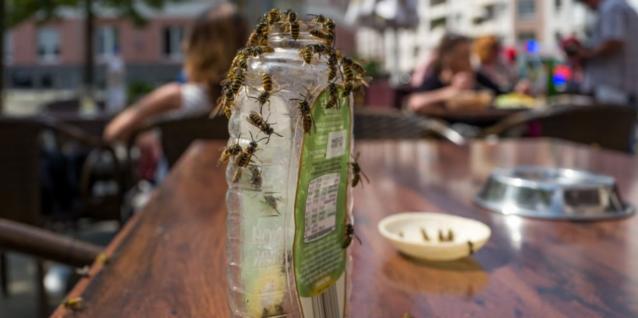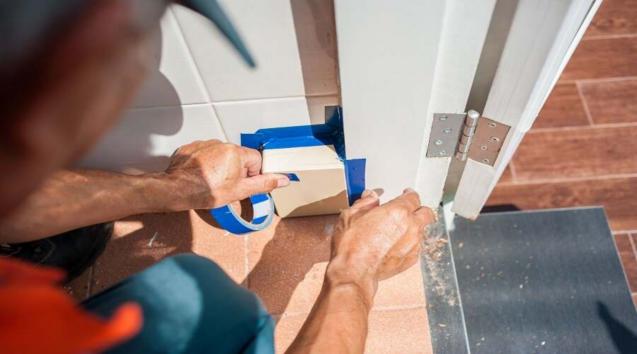
Guide To Termite Inspections
Termites cause structural damage worth thousands of dollars every year. The fact that these small insects can make a colony in your building and remain undetected for several years all the while causing serious damage makes them even more problematic. Termites can infest almost every building type.
Even brick homes are not immune to the damage caused by a termite infestation since they tend to have wooden frames and window sills that can be damaged by termites. These tiny insects built mu tubes to safely move from one place to the other. These mud tunnels are one of the obvious signs that you might have a termite infestation problem on your hands and you should call for a professional inspector to have your building checked thoroughly
What are termite inspections?
Because of the nature of termites, it is difficult to detect an infestation without close observation. For this, you will need the services of a trained termite inspector. Termite inspections are visual checks of the different areas of your home for signs and evidence of termites.
Termites are wood-damaging insects. This means by the time a termite problem becomes obvious, the wooden fixtures of your home might have undergone extensive damage. However, there are signs of termite activities that can be used by experts to determine the presence of these insects in your home.
How are they performed?
Termite inspections involve checking both home interior and exterior for visible signs of termite activities. Some of the visual signs of termite infestations that experts lookout for during termite inspections include termite droppings, mud tubes, broken wings, and wood damage. Some of the steps involved in termite inspections include:
A thorough termite inspection like this can take between 90 minutes to 2 hours. However, how much time the inspection will take depends largely on the size of your building.
Tools used during inspections
Visual inspection can only go so far. Termites live in walls, under floorboards, and in other elusive places. Use a specialised equipment for accurate results. Some of the tools used for termite inspections include:
Areas of property inspected
How often should they be done?
Generally, it is recommended that you have your home inspected for termites at least once a year. However, if you live in an area that has a high risk of termite infestation, you can have the inspection done every 6 months. You should also call for an inspection if you notice any of the signs of a possible infestation.
Average costs
The average costs of a termite inspection project can be anything from $190 to $250. The exact amount to pay depends on various factors including the size of the home. This cost should cover a thorough inspection of both your building interior and exterior. A report of the inspection will be sent to you along with any recommendations on how to get rid of the termite problem or how to prevent or lower the risk of infestation.
What if you have termites?
The purpose of a termite inspection is to indicate whether you have a termite problem in your home or not. If no termite is detected after the inspection, the inspector will only recommend mitigation solutions that will help prevent a future infestation. But even if a termite problem is detected, a trained inspector will be able to tell you exactly what to do. The exact recommendation depends largely on the nature of the problem. There are several termite treatment techniques that may be recommended. These include:
Summary
While you should watch out for some of the obvious signs of a termite problem yourself, a professional termite inspector will help spot the signs of an infestation that you are likely to miss. Professional inspectors will also offer recommendations for handling an active infestation and tips for preventing future invasions. Bear in mind that termite inspection is not what stops termites from coming into your home. The purpose of termite inspections is to detect an infestation early enough so you can act quickly before the termite causes major damage.
Even brick homes are not immune to the damage caused by a termite infestation since they tend to have wooden frames and window sills that can be damaged by termites. These tiny insects built mu tubes to safely move from one place to the other. These mud tunnels are one of the obvious signs that you might have a termite infestation problem on your hands and you should call for a professional inspector to have your building checked thoroughly
What are termite inspections?
Because of the nature of termites, it is difficult to detect an infestation without close observation. For this, you will need the services of a trained termite inspector. Termite inspections are visual checks of the different areas of your home for signs and evidence of termites.
Termites are wood-damaging insects. This means by the time a termite problem becomes obvious, the wooden fixtures of your home might have undergone extensive damage. However, there are signs of termite activities that can be used by experts to determine the presence of these insects in your home.
How are they performed?
Termite inspections involve checking both home interior and exterior for visible signs of termite activities. Some of the visual signs of termite infestations that experts lookout for during termite inspections include termite droppings, mud tubes, broken wings, and wood damage. Some of the steps involved in termite inspections include:
- Interior wooden fixtures
- Room by room check
- Exterior check
- Yard checks
A thorough termite inspection like this can take between 90 minutes to 2 hours. However, how much time the inspection will take depends largely on the size of your building.
Tools used during inspections
Visual inspection can only go so far. Termites live in walls, under floorboards, and in other elusive places. Use a specialised equipment for accurate results. Some of the tools used for termite inspections include:
- Termite Tapper
- Moisture meters
- Thermal imaging cameras
- Termatrac Motion
- Borescope
Areas of property inspected
- The wooden part of your construction especially in the crawlspaces and basement
- Wooden frames and sills
- Wooden support structures like posts, piers, joists, and sub floors
- Timber deck and porches
- Cracks and expansion joints through which termites can gain entry
- Exterior windows, door frames, and fence posts
- Tree stumps, wooden piles, and debris outside your home.
How often should they be done?
Generally, it is recommended that you have your home inspected for termites at least once a year. However, if you live in an area that has a high risk of termite infestation, you can have the inspection done every 6 months. You should also call for an inspection if you notice any of the signs of a possible infestation.
Average costs
The average costs of a termite inspection project can be anything from $190 to $250. The exact amount to pay depends on various factors including the size of the home. This cost should cover a thorough inspection of both your building interior and exterior. A report of the inspection will be sent to you along with any recommendations on how to get rid of the termite problem or how to prevent or lower the risk of infestation.
What if you have termites?
The purpose of a termite inspection is to indicate whether you have a termite problem in your home or not. If no termite is detected after the inspection, the inspector will only recommend mitigation solutions that will help prevent a future infestation. But even if a termite problem is detected, a trained inspector will be able to tell you exactly what to do. The exact recommendation depends largely on the nature of the problem. There are several termite treatment techniques that may be recommended. These include:
- Chemical treatment
- Termite baits
Summary
While you should watch out for some of the obvious signs of a termite problem yourself, a professional termite inspector will help spot the signs of an infestation that you are likely to miss. Professional inspectors will also offer recommendations for handling an active infestation and tips for preventing future invasions. Bear in mind that termite inspection is not what stops termites from coming into your home. The purpose of termite inspections is to detect an infestation early enough so you can act quickly before the termite causes major damage.



